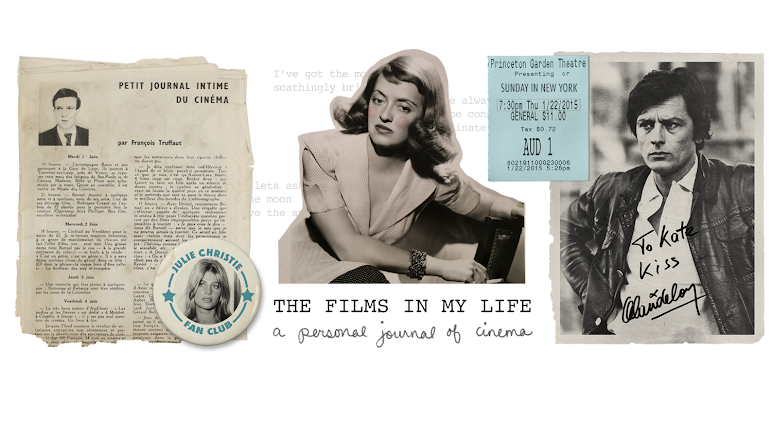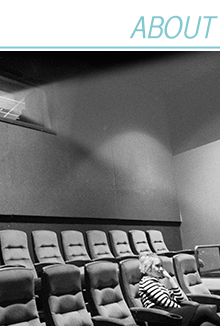When swinging through the rigging over ship deck, rapier in hand, or bounding across castle turrets, Douglas Fairbanks caused boys to dream of being men; and better still, he made men dwell for a moment in the buoyant gravity of youth.
From the beginning, Fairbanks’ screen persona was defined by the power of joy – an aggressive satisfaction fueled by sleek muscle and great lungfuls of oxygen. A couple of his earliest films were for D.W. Griffith, but the two didn’t mesh well. Griffith was seeking a spiritual place with his filmmaking – a connection to the angels. For Fairbanks, jumping over a high fence in a three piece suit connected him immediately to something, well, if not angelic – certainly heavenly. The great D.W. became quite exhausted by young Fairbanks’ athletic tendencies and his spontaneous script re-writes that included climbing up trellises or scaling church walls. He was instructed to try Keystone Comedies, where his gymnastics might be put to better effect.
Between 1915 and 1920, he made primarily comedies; always the can-do youth, the young man of industry – scaling the challenges of the new century by the brute force of optimism. Stylish and smart, his young American will always be first to impress the boss, sell the most product, sweep a reluctant girl (always at first shocked by his bombastic approach) completely off her feet. Titles like Reaching for the Moon (1917) Mr. Fix it (1917) and He Comes Up Smiling (1918) tell the tale; as does the perfectly Fairbanks His Majesty, The American (1919). In all these films Fairbanks casually strode through the competition with good nature, his beautiful smile, and a clap on the back for one and all. Fit and trim, his physical energy was a clear sign of his easy dominance; his leaping from ground to tree branch, or running two or three strides straight up the side of a building, an elegant but clear message: I am not, like you, earthbound! Isn’t it beautiful? He was the winner even second-stringers loved - simply because Fairbanks loved them, too, while floating up the ladder right passed them.
By 1919 he had made some very successful Westerns, but Fairbanks was no cowboy. He was simply our bright and hungry young man, leaping onto horses as if they were modern convertibles, hardly needing a six-gun. Fairbanks’ westerns were, more than anything, witty spoofs of the genre. Then, in 1920, Douglas Fairbanks made The Mark of Zorro. For the next decade, indeed for the remainder of the Silent Era, he never bothered to anchor himself in the dull confines of a modern reality again.
In positioning his screen characters in distant history, a history steeped in romance, he became larger than life; a player in romantic legend. Whereas before his screen persona seemed perfectly matched to America in a new age, his character and image after 1920 became timeless and universal – an archetype. Somehow his very appearance seemed to change. His body, always strong and athletic, seemed a bit blocky when clothed in shirt and suit. Newly adorned in ruffled shirts and boots (or better still completely shirtless in The Thief of Bagdad) his physique seemed lithe and panther beautiful. His smile, always charming and wide, was transformed into a megawatt beacon designed to light the shadows of an unhappy world. And his sheer athleticism, his acrobatic body, became something more than a useful and pretty tool for social climbing – it became a gorgeous weapon for the oppressed and defenseless; a noble and supple machine filled with benevolent power. When people in movie palaces saw Fairbanks plunge his dirk into the sail of the pirate ship and slide down its length in The Black Pirate, they stood up as if watching a grand, historical moment.
Between 1920 and 1930, Douglas Fairbanks produced and starred in The Mark of Zorro, The Three Musketeers, Robin Hood, The Thief of Bagdad, Son of Zorro, The Black Pirate, and The Iron Mask. All these films communicated to the public in unprecedented ways, heightened and elevated their expectations about what a male star could and should do in film; as well as changed their perceptions about the speed and pace of film. These were the first true action movies (films in which adventure and action were the centerpieces and crucial to the story, if not the primary appeal); and they represent the most important and influential series of action/adventure films ever produced by an American. In the Pirates of The Caribbean franchise, Johnny Depp may be slurring his dialogue like Keith Richards, but his action sequences, his moments of grandeur, call directly upon the ghost of Fairbanks.
There has never been an American actor as completely breathtaking on screen as Douglas Fairbanks. Indeed, no one since even comes close. If you doubt me watch any of the above films. Watch Fairbanks spring from table to wall mantle in Mark of Zorro, perched 8 feet above his advisories, smiling down at them. Watch him bound across the turrets of England in Robin Hood, appearing for a moment as if, like Superman, he were a creature born without the restrictions of earthly physics. Watch his brilliant and graceful sword work in The Black Pirate. These and countless other moments leave the mouth open, the face smooth with wonder. In short, watch him in anything. You will, I guarantee you, feel a chill travel over your skin.
But Fairbanks had something special, something beyond physical prowess and gymnastics, that audiences felt instinctively in particularly wordless moments, which struck them directly at the heart.
There is the perfect Fairbanks’ moment in the perfect Fairbanks’ role: D’Artagnan in Fred Niblo’s The Three Musketeers. D’Artagnan has just arrived in Paris, and is seen riding through the city’s main gate. The city streets are vibrant with activity; carts being hurried along, citizens bustling, women waving handkerchiefs from windows. D’Artagnan pauses a moment, bringing his horse to a stop just inside the cities’ broad arch as people mill passed. The future musketeer looks around, drinking into his chest the churning, sophisticated atmosphere of Paris. His smile suddenly lights the scene and all the city around him; a smile that turns into a laugh.
The glory of Fairbanks is that we know exactly what has made him so happy: His own brief mortality, the feel of his horse under him; the feel of the air on his face, the sound of voices – and more: His is the good fortune to be living on such a perfect globe, in such a wonderful, singular moment as this. This instant has come to him, belongs to him, and his joy is this very second of brief, sweet life. His smile is love.
And, for a moment, sharing the light of a Fairbanks’ smile, we have our moment as well, and believe that our tomorrows must promise adventure. -- Mykal Banta




















5 comments:
Great post. I heart Doug Sr. big-time!
What movies can give you a thrill like a Fairbanks? I'm afraid that I'm a 12 year old inside, and I love a good adventure story!
Kate, this is one of your best!
Kate: That is a truly wonderful portrait of Fairbanks. You have captured that smile beautifully. Really magnificent work. -- Mykal
Quite excellent Mykal! A very nice tribute to the great Fairbanks.
Great drawing Kate!
Great drawing, Kate! And great post, Mykal! When people think of swashbucklers, they usually think Errol Flynn, but it was Fairbanks who set the pace for all swashbucklers to come.
Post a Comment